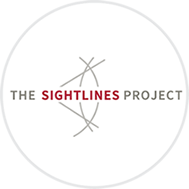
Long before the Sightlines project was a glimmer in the eye of the Stanford Center on Longevity, Laura Carstensen and her team were puzzling over how to ensure people arrive at old age physically fit, mentally sharp, and financially secure. Over the years, a small and mighty team has made incredible strides to this end –evaluating scientific evidence, convening experts from around the globe, and educating the masses on both the challenges to aging as well as the opportunities it provides. Their mission: to ensure a long, bright future for all.
It became clear that our shifting culture in response to this new era of longevity needed to be quantified. There was no measure of whether long-lived societies were on the right track or the wrong track. As a result, it was difficult to ascertain who we should help, or how. Within each of its three core divisions, SCL offered cohesive stories about innovation and behavior in mobility, mind, and financial security. A large focus of this work, however, was on old age because this is the stage in life where it seemed people needed the most support. Why? Because old age as a population is a new phenomenon for which we are sorely underprepared. Thus, SCL spent much of its first 10 years curating key insights into this relatively untapped market.
As the center evolved, so too did its view of longevity. It was impossible to ignore several persistent observations:
- Longevity is not only an issue for the aged, but one that requires care and feeding throughout the entire life span from the cradle to the grave.
- We know well that Mobility, Mind, and Financial Security are three pillars of longevity, but these are not mutually exclusive. Cultivation of one feeds into progress in the others and by the same token, depletion of one siphons off the others.
- Who and when matter so much more than is acknowledged in popular understanding of longevity. The generation into which we are born, the era in which we achieve life milestones, race and ethnicity, gender, and socio-economic status –all of these contexts and many more create a unique spotlight illuminating the road to long life and the roadblocks along the way.
Enter the Sightlines project with the lofty goal of developing a diagnostic tool to see how Americans are doing on the way to living not just longer lives, but better, longer lives. Last year, we released a report providing an overview of American life in three major domains of well-being: healthy living, social engagement, and financial security. We compared how Americans were doing in each of these domains, at distinct life stages, over time, and by demographic segments. Doing so allowed us to take a step back and reflect on where Americans have done well and where they required support so that we can make targeted strides to ensure every American is afforded the opportunity to reach long, healthy lives.
In under two years, the project has taken on a life of its own. Truly, Sightlines is now a “project” in name alone. Going forward, Sightlines is serving as a guiding framework for everything we are doing at the SCL. Internally, the 2018 Design Challenge topic was inspired by Sightlines to design for promoting lifelong habits in physical, social, and financial health, and the next SCL launch conference will be on social technology, which was in response to our finding that fewer Boomers are socially engaged than their same-aged predecessors. The Sightlines framework and findings are also informing our latest research collaborations with thought leaders from diverse organizations including Fidelity Investments, Comfort Keepers home-based care agency, and the California State Teacher Retirement System, to name a few. Outside of the SCL, media outlets ranging from expert freelance journalists such as Carol Hymowitz to major news publications, including TIME magazine and CBS News, are working to make Sightlines a household name. Think tanks and policymakers such as Brookings Metro and King County, Washington, are beginning to apply Sightlines to inform their own research and development. Next year, corporations such as Bank of America/Merrill Lynch, Prudential and Society of Actuaries are supporting new research to gain deeper insights into Americans financial security including gender variation in financial decision-making, generation gaps in home ownership, and dire straits of Boomer retirement.
In the coming decade, we plan to broaden Sightlines’ reach even further. With an interactive website, active social media presence, publicly available survey findings and tools, a series of publications, and several exciting projects underway, Sightlines has gone from a compelling report to an SCL institution. Beyond SCL, Sightlines provides a common, comprehensive language spoken by both public and private leaders seeking to mobilize, enhance and translate research. In doing so, we can work together effectively and seamlessly in the pursuit of all Americans living long and living well.
![]()

